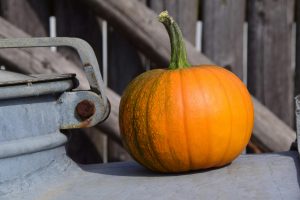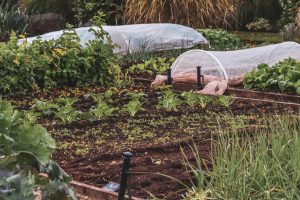
Pumpkin Growth Hack: Fertigation Tips for Halloween Patch Success
October is the season of pumpkins. From farmers preparing their harvest for markets, to landscapers designing festive displays, to families visiting pumpkin patches for Halloween

As the global population is projected to reach 9.7 billion by 2050, the challenge of increasing food production to meet the needs of this expanding populace remains a critical issue for agricultural experts. Identifying sustainable and cost-effective plant production methods, without substantially increasing food prices, is a continuous challenge for today’s farmers. Historically, pesticides have been the primary tool for protecting and ensuring the growth of the world’s food supply due to their effectiveness and affordability. Despite the success of various pesticides, including insecticides, herbicides, and fungicides, plants have natural barriers that impact the absorption and movement of these substances.
The primary barrier to pesticide absorption in plants is the cuticle, a waxy layer covering the entire plant surface that prevents water loss. Consequently, pesticides applied to leaves encounter more resistance than those applied to soil. To address these challenges, specialized additives known as surfactants are added to spray solutions to enhance their emulsifying, spreading, sticking, and absorbing properties. Pesticides formulated or applied with surfactants reduce surface tension on the plant’s surface, allowing for more efficient movement of the pesticide through the cuticle.
Understanding Surfactants:
Surfactants, or surface-active agents, are classified into four main types: non-ionic, anionic, cationic, and amphoteric, based on the electrical charge on the hydrophilic end of the molecule. Non-ionic surfactants are the safest and most versatile, accounting for nearly 50% of surfactant production. Their lack of electrical charge allows them to be used with any product, as there are no ions to react with the active chemical. By reducing the surface tension of the spray solution, surfactants spread the pesticide more effectively across the leaf surface, increasing the contact area and allowing the chemical to saturate plant leaves instead of beading up and running off.
Products like Aqua Drive Liquid Lawn Aerator also enhance nutrient uptake in soil by increasing mass flow. Organic coatings from decomposing matter, such as roots and shoots, can make soil hydrophobic and water-repellent, causing water run-off and localized dry spots. Soil surfactants act as a bridge between these organic coatings and water, aiding in water penetration and retention, ensuring more even distribution of water and nutrients.
Maximizing Surfactant Effectiveness:
Variations in plant species, such as wax content, leaf arrangement, architecture, and plant hairs, can influence the performance of surfactants. To optimize benefits, the solubility of the surfactant should match that of the pesticide—both should be either oil-soluble or water-soluble. Environmental conditions also play a role; thicker cuticles are harder to penetrate under low humidity, while thin, permeable cuticles are favored by high humidity and moisture conditions.
Conclusion:
Surfactant technology has undeniably increased pesticide effectiveness, but caution is necessary to avoid plant damage. Selecting the appropriate surfactant is crucial, as incorrect use can lead to plant toxicity and membrane permeability damage. When used as directed, non-ionic surfactants offer a safe, stable, and effective solution for farmers aiming to meet the nutritional demands of a growing global population.

October is the season of pumpkins. From farmers preparing their harvest for markets, to landscapers designing festive displays, to families visiting pumpkin patches for Halloween

Fall soil care is about more than just replacing what crops, lawns, or gardens have consumed over the growing season. It is about setting the
Give us a call or visit our store, and we’ll help you find the right solution for your business.
© Supply Solutions LLC 2025